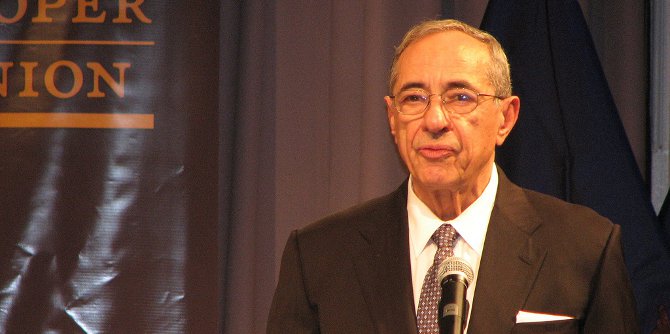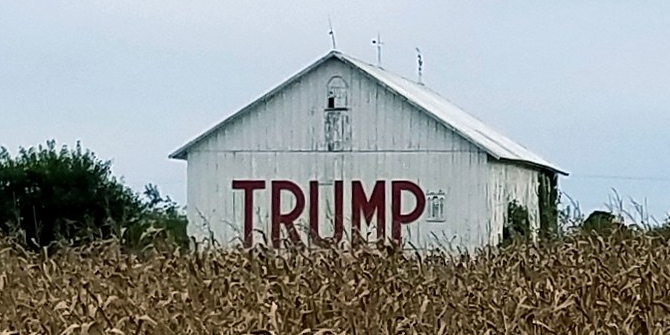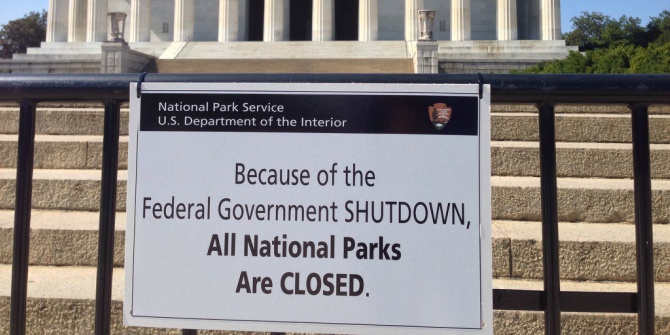 In the run up to this year’s midterm elections in Virginia, the contest between the incumbent Senator Mark Warner, and his Republican challenger, Ed Gillespie, was widely expected to be a relatively easy win for the incumbent. Why then, did Mark Warner win the election by less than 1 percent of votes cast? Toni Michelle-Travis looks at Virginia’s surprising result, writing that a combination of Gillespie’s attacks against Warner over his links to President Obama and Warner’s lack of strategies to account for an expected fall in turnout were key in making the election much more favorable to Gillespie than had been previously predicted.
In the run up to this year’s midterm elections in Virginia, the contest between the incumbent Senator Mark Warner, and his Republican challenger, Ed Gillespie, was widely expected to be a relatively easy win for the incumbent. Why then, did Mark Warner win the election by less than 1 percent of votes cast? Toni Michelle-Travis looks at Virginia’s surprising result, writing that a combination of Gillespie’s attacks against Warner over his links to President Obama and Warner’s lack of strategies to account for an expected fall in turnout were key in making the election much more favorable to Gillespie than had been previously predicted.
Virginia’s senate race between Republican Ed Gillespie and Democratic incumbent Mark Warner was not on the list of battleground states because it was not expected to be a close race. Yet Warner, who was seeking his second term, won by less than 1 percent. With a margin of only 17,671 votes, Warner won only after the votes of northern Virginia’s suburban Fairfax County were tallied.
Warner was favored to win easily over Gillespie, a former head of the Republican National Committee and lobbyist, who had never held public office in Virginia. Gillespie hammered Warner’s image by tying him to voting 97 percent of the time in congress with unpopular President Obama. This cost Warner votes in rural Virginia where he had previously used his “Bubba strategy” of connecting with southwestern Virginians by showing an interest in hunting and NASCAR racing. In 2008, Warner won southwestern Russell County by 33 points. In 2014 Warner lost Russell County by 23 points. This year, voters equated a vote for Warner as a vote for Obama’s policies such as the Affordable Care Act and clean energy when coal mining is a long-standing occupation in southwestern Virginia.
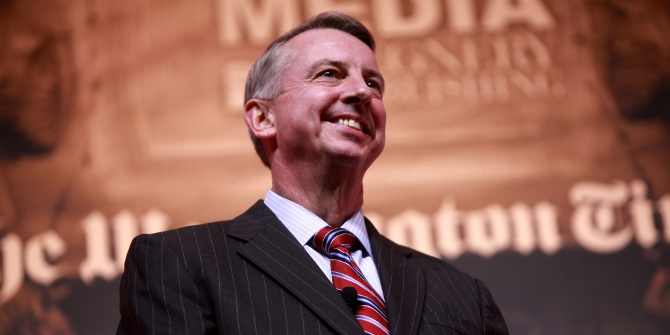
Warner’ strategy was to recycle his shop worn theme of bipartisanship. He attacked Gillespie on his lobbying efforts on behalf of Enron, which in 2001, became the largest bankruptcy in America history because of accounting legerdemain, its employees losing their jobs and pensions. The shockwaves caused the demise of Arthur Andersen, a major accounting firm. According to Jeff Sharpiro of the Richmond Times-Dispatch, this strategy “only gave Republicans a reason to vote against Warner and Democrats an excuse not to vote at all”. In an effort to attract moderate Republicans and independents. Mark Warner was joined on the campaign trail by former Republican Virginia Senator John Warner.
Voter turnout was closely watched in this non-presidential year. The proven strategy of appealing to Virginia’s outer suburbs was not a Warner priority. Campaigning in voter rich Loudoun and Prince William counties provided the margin of victory for Tim Kaine’s campaign for governor and U .S. senator, as well as Terry McAuliffe’s run for governor last year. However, it is always important to energize the party base of women, African American, youth, and urban voters. In this off-year election turnout was expected to drop, but Warner did not counter this trend by aggressively using social media or systematically courting the historically reliable democratic voters. In a low turnout year voters were predictably white, male conservative Republicans according to Shapiro.
Gillespie had to overcome two obstacles: the lack of money because his race was not considered a priority by the Republican National Committee (RNC) and third party candidate was Robert Sarvis, a Libertarian. In the final weeks the RNC shifted funds to Republican candidates in battleground states. At that crucial point an infusion of money could have helped Gillespie buy more television ads in the final days. Sarvis posed a problem because he could potentially siphon off votes from Gillespie. This election was a rerun for Sarvis who had been a candidate in the 2013 gubernatorial race of Cucinelli versus McAuliffe. The voters were now familiar with his name, but Sarvis pulled only 2.4 percent of the voters, or 53,547 voters to his column.
The strong showing by Ed Gillespie was heartening to the Republicans. Democrats now worry that Gillespie’s power as a voter getter places him a position to run for Virginia governor in 2017. Former Lt. Governor, Republican Bill Bolling is still waiting for his chance to run for governor.
Figure 1 – Virginia county electoral map
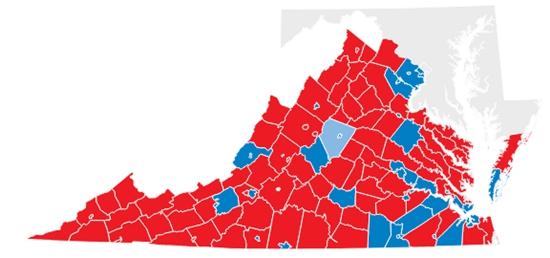
Source: Washington Post
Virginia voters clearly present a checkerboard pattern where urban areas vote for Democrats (blue) and those in the vast rural areas vote for Republicans (red). Indeed, there are only a few urban strongholds, but they can sway an election. This means that future elections will be decided by by northern Virginia’s growing population of immigrants and IT job seekers versus those who live in the “real Virginia”.
Please read our comments policy before commenting.
Note: This article gives the views of the authors, and not the position of USApp– American Politics and Policy, nor of the London School of Economics.
Shortened URL for this post: http://bit.ly/11lN7Fa
_________________________________
 Toni-Michelle C. Travis – George Mason University
Toni-Michelle C. Travis – George Mason University
Toni-Michelle Travis is Associate Professor of Government and Politics at George Mason University. Her scholarly work focuses on electoral and racial politics in Virginia and Washington, D.C. Her latest publications are Democratic Destiny and the District of Columbia (With Ronald Walters, Lexington Books, 2010) and The Meaning of Difference (With Karen Rosenblum, McGraw-Hill, 2008).



